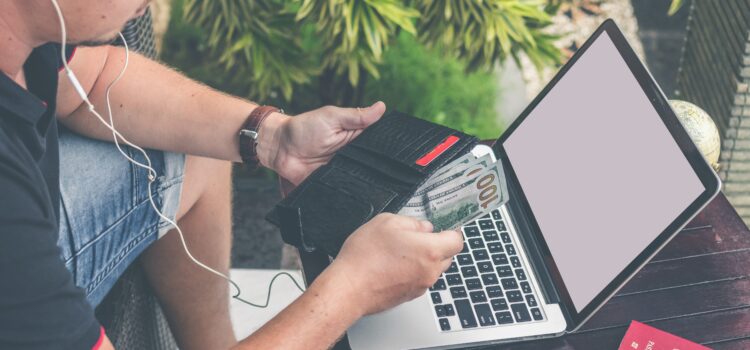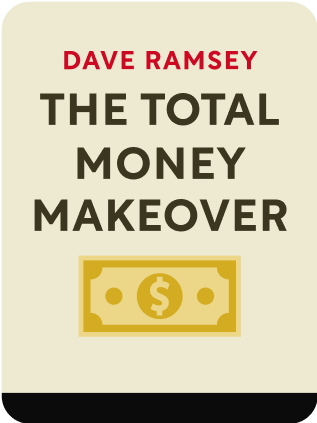

This article is an excerpt from the Shortform book guide to "The Total Money Makeover" by Dave Ramsey. Shortform has the world's best summaries and analyses of books you should be reading.
Like this article? Sign up for a free trial here .
What is baby step 1 of the Total Money Makeover program? What is an emergency fund?
Baby step 1 is to create a $1000 emergency fund. This emergency savings is an essential backup as you work through the Total Money Makeover program.
Read more about baby step 1 of the Total Money Makeover program.
Total Money Makeover Baby Step 1: Create an Emergency Fund
Now that you’ve dispensed with the common debt and money myths, you’re almost ready to begin the Total Money Makeover process, which consists of a series of seven simple steps, referred to in the book as baby steps. No matter how big your financial challenges, you can overcome them by taking one small step at a time.
However, it’s important to follow each Total Money Makeover step in the prescribed order, because the steps build on each other. If you jump ahead to later steps, you’ll fail at them because you haven’t laid the foundation. Just concentrate on one step at a time in sequence.
Before starting, however, there are two preliminary steps:
- Write out a monthly budget.
- Get current on all your payments.
Preliminary Step #1: Make a Budget
Create a written budget each month determining where your money will go; if you don’t, it will just disappear without your thinking about it.
Successful people have written goals; simply put, a monthly budget is your money goal. It wouldn’t make sense to build a house without blueprints, nor does it make sense to spend your life’s earnings of $2 million without a plan.
Motivational speaker and author Brian Tracy notes that having written goals is a more important contributor to extraordinary success than education, connections, talent, or inherited wealth. He quotes a study of Harvard graduates, which found that two years after graduating, the 3% with written goals had greater financial success than all others combined.
(Shortform note: read our summary of Brian Tracy’s book, Eat That Frog, here.)
Ramsey’s monthly budget forms can be downloaded here.
Here are the basic steps to get started:
- Each month, draw up a new budget for the next month. If you’re married, sit down with your spouse to do this. Conflict over money is the No. 1 reason for divorce in the U.S. Often this is due to different personalities and money management styles. The way to prevent conflict is to let differences complement each other and work together each month to establish shared money goals.
- List the month’s bills, savings, and debts, then list and allocate every dollar of your income (think of this as spending the money on paper before the month starts). This process is referred to as zero-based budgeting: monthly income minus expenses equals zero. If you have variable income because of commissions or self-employment, use this budget form.
- Once both partners agree on a budget, pledge not to do anything with your money that isn’t prescribed by the written plan. You can’t get control of your spending without working together. If something unexpected comes up—for instance, your car needs repairs—hold an emergency meeting and together reallocate and balance the categories so that the month’s income minus expenses still equals zero.
Preliminary Step #2: Catch Up on Loan Payments
Besides creating a monthly budget, the next thing you must do before taking your first Total Money Makeover step is to get current on all loan and credit card payments.
If you’re behind on any payment, you need to catch up. If you’re really behind, pay for your necessities first—food, shelter, and transportation—then catch up on debt payments. You can’t start a Total Money Makeover, which hinges on eliminating debt, until you’re keeping up with your payments.
Now, get fired up about putting your financial problems behind you and focus intensely on the steps that follow.
Baby Step 1: Create a $1000 Emergency Fund
Everyone needs a rainy day fund because it’s guaranteed to rain—there’s always a financial emergency—at some point.
In a typical 10-year period, according to Money magazine, 78% of people will have a major financial challenge, such as a layoff or firing, an unexpected pregnancy, or illness. Things happen and you need to be ready with an emergency fund, which is why baby step 1 is about starting the emergency savings you need.
Saving $1,000—fast—is the baby step 1 in the Total Money Makeover because, without a financial cushion for emergencies, an unexpected expense is likely to derail the program. If you respond to a financial emergency by turning to debt after starting a money makeover, it will be like breaking a diet and you’ll feel like a failure.
Besides keeping your reform efforts on track, having an emergency fund is a hedge against Murphy’s law—trouble seems to dog anyone without a safety net. Granted, $1,000 won’t get you through a life-altering crisis, but it’s enough to keep smaller crises from triggering debt. You’ll build on this amount in step #3, when your finances are in better shape.
Many people think you should have a credit card for emergencies, but it’s better to plan and save for emergencies than to borrow when they happen, which puts you at even greater risk. The Total Money Makeover is about breaking the cycle of dependence and eliminating credit.
What Emergency Savings Is For
An emergency fund is for emergencies only—for instance, a medical problem or an expensive repair for a car that you need for work. It’s not for things you suddenly want, like a couch on sale or a weekend trip.
Christmas isn’t a financial emergency, although many people treat it that way. It’s a yearly event that you can save and budget for it. The same is true of your kids outgrowing their clothes—it’s expected and you need to plan for it. These kinds of things feel like emergencies only when you haven’t planned for them.
How to Get to a $1,000 Emergency Fund
Do whatever you can to round up $1,000: cut your spending, work extra hours, or sell something (have a yard sale, for instance). Most people can find the money in less than a month, but if you can’t, sell more stuff or take on an extra job.
When you get $1,000, stash it where it’s accessible in an emergency but not so easy to grab that you’ll be tempted to spend it for non-emergencies. If you put it in a savings account, don’t attach that account to your checking account as overdraft protection—or you’ll spend it on impulse buys. (One woman framed 10 hundred-dollar bills and hung the “picture” out of sight in a coat closet.)
On the other hand, don’t put it where you’ll be reluctant to tap into it during an emergency, for instance in a CD with a penalty for early withdrawal. This might tempt you to borrow for the emergency instead. When your emergency fund is fully funded (baby step #3), a money market fund is the best place for it—Chapter 8 explains this in more detail.
If you need to use your emergency fund during the Total Money Makeover, pause the program, regardless of the step you’re on, go back to step 1, and replenish the emergency fund.
Along with monthly budgeting, creating an emergency fund may be your first experience of taking control of your money. Having a hedge against disaster for possibly the first time should empower you and give you a sense of hope. That’s the purpose of baby step 1 and having a $1000 emergency fund.

———End of Preview———
Like what you just read? Read the rest of the world's best book summary and analysis of Dave Ramsey's "The Total Money Makeover" at Shortform .
Here's what you'll find in our full The Total Money Makeover summary :
- The 7 steps to achieving financial stability (you'll love #7)
- A fool-proof plan for becoming debt-free
- How myths about debt and money are crippling your financial health






